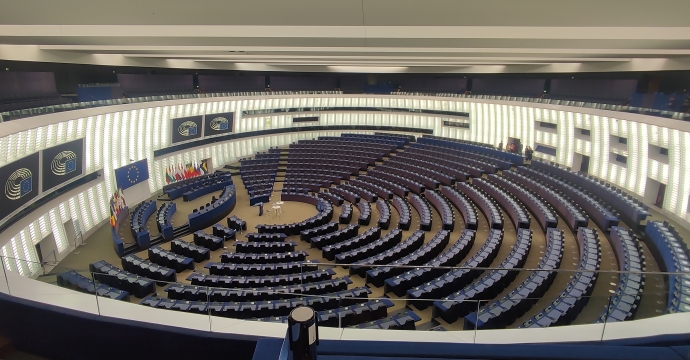From the editor: What’s in store for EU climate policy post-election? [Gas in Transition]
European parliamentary elections on June 6-9 resulted in a shift to the right, albeit not as much as widely expected. There were many reasons for this shift, from concerns about slow economic growth and rising inflation to immigration issues and rising EU skepticism. Another is opposition to the European green agenda, perceived as contributing to high energy costs, which in turn has exacerbated the cost-of-living crisis and economic problems.
Following these election results, and with the top EU positions still up for grabs, the question is how European climate policy will take shape moving forward.
The liberal and pro-climate Greens and Renew Europe parties lost 18 and 23 seats respectively in the election, while the right-wing European Conservatives and Reformists (ECR) and far-right Identity and Democracy (ID) party gained four and nine seats. The centre-right European People’s Party (EPP) remains the biggest political group by a clear margin, securing 10 extra seats to reach a total of 186.
There were fears that a hard shift to the right would lead to the undoing of some existing green policies, introduced over the last five years. For one, these policies – which include renewable energy targets, a strengthened carbon pricing regime for the power industry – would be legally very difficult to reverse. These policies are already set in EU law and are being deployed across the bloc’s member states.
Pro-climate lawmakers still dominate parliament with a strong majority. But a more rightward-leaning parliament will nevertheless make it harder to pass more ambitious climate laws.
90% by 2040
At stake is a target that the next European Commission is expected to officially propose to cut greenhouse gas (GHG) emissions by 90% by 2040, versus a 1990 baseline. The EU currently aims to reduce emissions by 55% by 2030 and reach net zero by 2050, but there is no target for 2040.
Even reaching the 55% by 2030 target will be challenging. Emissions were down only 32.5% in 2022 – and this was amid lingering effects of a global pandemic and at the height of Europe’s energy crisis. A European Commission analysis of national energy and climate plans released in December estimated that only a 51% cut would be achieved by the end of the decade. Last October, the European Environment Agency (EEA) projected that emissions would fall by only 60% by 2040 and 64% by 2050.
The 90% target for 2040 would entail accelerated efforts to decarbonise into the next decade, even though the EU is not on track to reach its 55% target for 2030.
The Commission recommended the 90% by 2040 target in February when it published a detailed impact assessment outlining possible pathways to reach net zero by 2050. The following month it received conditional support from member states, with 10 countries in favour, three against and 13 requiring additional concessions, during a meeting of environmental ministers in Brussels.
The shift in parliament may not only make it harder for the target to get backing there, but the governments of some member states seeking reelection where the shift was significant may avoid supporting ambitious new green policy, viewing the election results as reflective of their constituents’ attitudes. The 90% target will need the backing of both parliament and member states to get passed.
Future leaders
There will be greater clarity on future European green policy once the bloc appoints the leaders of its top institutions – the head of the European Commission, Parliament and Council. Ursula von der Leyen – seen as the chief architect of the European Green Deal, is expected to maintain her position as European Commission President. She will need the approval of 20 of the EU’s member states that make up 65% of the EU population to secure a nomination for the rule from the Council. Signals indicate she should be able to secure these numbers.
However, the policies of a new von der Leyen Commission may not be the same as those seen over the past five years. The energy crisis has heightened concerns about energy security and affordability, which in turn could mean efforts to fast-track the energy transition are deprioritised.
Tipped as the favourite to replace Charles Michel as European Council President is Portugal’s former Prime Minister and centre-left Socialist Antonio Costa. The position has an important role in brokering agreements on contentious subjects between member states, including climate policy. Maltese politician and member of the centre-right EPP Roberta Metsola is meanwhile seen as having a good chance of remaining President of Parliament for another two and a half years.
In any case, the EU’s next leader will have their work cut out in mapping out climate policy that successfully reduces emissions without exacerbating the bloc’s serious economic problems. Energy costs remain high, contributing to economic stagnation, high living costs and industrial uncompetitiveness compared with other areas of the world like the US and China where industry is fuelled by cheap energy. At the same time, Europe’s energy transition is not on track amid lack of progress in efficiency and financing for deployment of low-carbon technologies.
Attempting to address these challenges simultaneously will require a delicate balance of policies.



